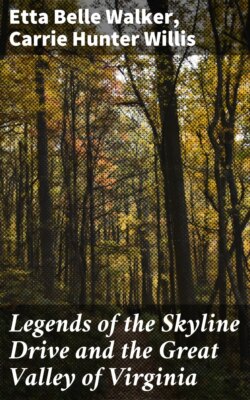Читать книгу Legends of the Skyline Drive and the Great Valley of Virginia - Etta Belle Walker - Страница 11
На сайте Литреса книга снята с продажи.
The Scotch-Irish in the Valley
ОглавлениеTable of Contents
Many reasons caused the people of Europe to emigrate during the eighteenth century. In Ireland and Scotland an unrest was spreading as seen in the story of John Lewis.
He was born in Ireland and was a thrifty gentleman. He fell in love with and married Margaret Lynn, daughter of the laird of Loch Lynn, a descendant of a powerful Scotch clan. They were very happy with their three little sons and soon John Lewis rented more lands from a landlord. These lands brought him more and more wealth and the landlord grew jealous. He told Lewis that he would not let him continue to cultivate them, although the lease was not expired.
One day the landlord came to the Lewis home. He brought many of his hirelings and demanded that Lewis vacate the house at once. At the time, Lewis' brother was ill and could not help him defend his home. Margaret, his wife, and a few servants quickly barred the doors and windows and defied the landlord to enter.
The infuriated man began to fire into the house and one shot killed John Lewis' brother and one wounded Margaret. John could not stand such an outrage any longer, so he rushed out and in the fight which followed, he killed the landlord.
His family and neighbors, knowing the influential Irish would not give him a fair trial, urged him to flee the country. At last he consented to go, but before he did, he carefully wrote down all the details of the trouble and sent it to the proper authorities. Then he hastily left the country and soon was on his way to Virginia. Lewis went to Williamsburg after landing in Virginia. There he met a weaver, Salling, who told him some of the wildest stories he had ever heard.
The weaver had known a peddler, named Marlin, who took his pack far into the land beyond the mountains and traded his pewter ware, beads, compasses and other small articles to the Indians for furs. He told Salling such marvelous stories of the Indians and country that the weaver asked to let him go on one of his trips with him. This he did, and the weaver had plenty of adventures before he finally got back to Williamsburg.
The two men reached the Valley and were far beyond the Blue Ridge Mountains when the Cherokee Indians, thinking they were spies, took them prisoners. Marlin had the good fortune to get away, but Salling was carried farther across another mountain range into what is now Kentucky, where the Indians went to hunt buffalo. Here the Cherokees were attacked by their enemies from Illinois. Salling was again captured and carried off to the southwest. He was adopted by an old Indian squaw as her son and for some time he lived with her. At last a Spaniard bought him and took him as an interpreter to Canada. There he met the French Governor who sent him to New York and after six years, he at last reached Williamsburg.
You would think Salling after this would have settled down and become a weaver again. But life was too tame. When Lewis asked him about the lands in the Valley, Salling decided to take him and the Englishman, John Mackay, who also wanted to go. Lewis found the country all that Salling had promised him and he decided to settle on a creek which bears his name today.
He obtained authority to 100,000 acres of land in and near the ground on which he built his fort-like house. Before very long, many of his friends and neighbors from Ireland were on their way to Virginia to join him. Many of them settled in Western Augusta near Fort Lewis. One can imagine how happy it made John Lewis to be told that the authorities, upon investigation, had granted him a pardon and absolved him from all blame in the killing of his landlord before he left Ireland. These Scotch-Irish, like their German neighbors, did not have very much trouble from the Indians for several years.
Thomas, a son of John Lewis, studied and went to represent his county in the House of Burgesses. He was a man of sound judgment and voted for Patrick Henry's celebrated resolutions.
Andrew, another son, was a soldier, and made his home in Botetourt County. During the Indian Wars, he was made a General but not until he had proved his worth in many a battle. He served with George Washington on July 4th, 1754 when Fort Necessity was taken, and he was present when the articles of the treaty were agreed upon. When Washington was made Commander-in-Chief, it is said he asked Lewis to accept the commission of brigadier-general. In 1776 he commanded the Virginians when Governor Dunnmore was driven from Gwynn's Island and we are told he gave the order for attacking the enemy and he himself lighted the match to the eighteen-pounder.
General Lewis resigned in 1780 and on his way home was taken ill with fever. He died near Bedford, about forty miles from home.
We cannot give all the accounts of William, Andrew and Charles, the other sons, but if one would read interesting captures and escapes from Indians, he will find that of Charles most exciting.
The sons of John and Margaret Lynn Lewis helped to develop the Valley of Virginia and their name is an honored one wherever it is found.
